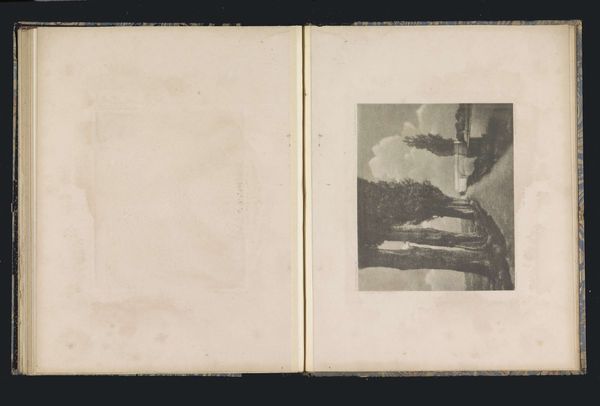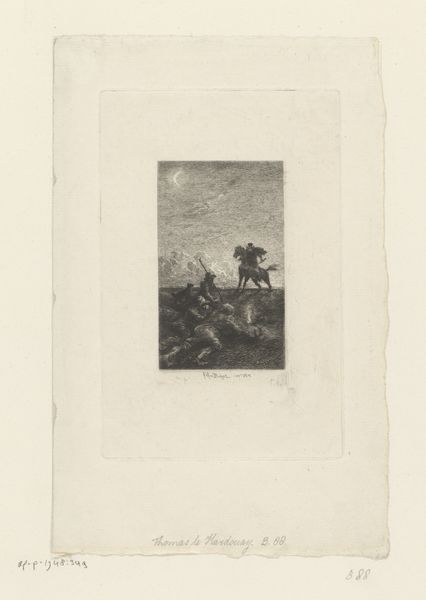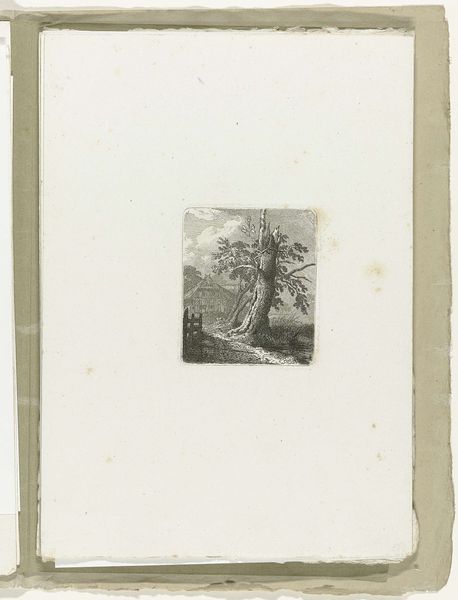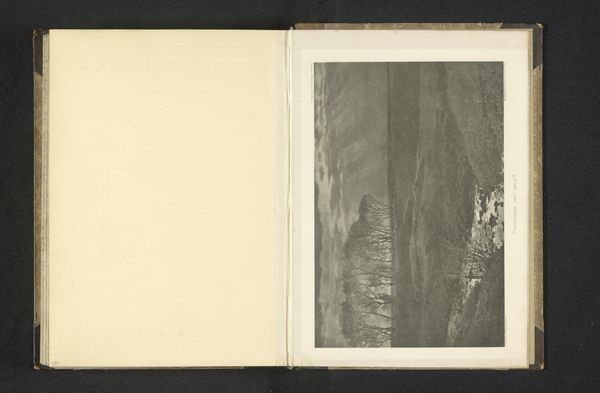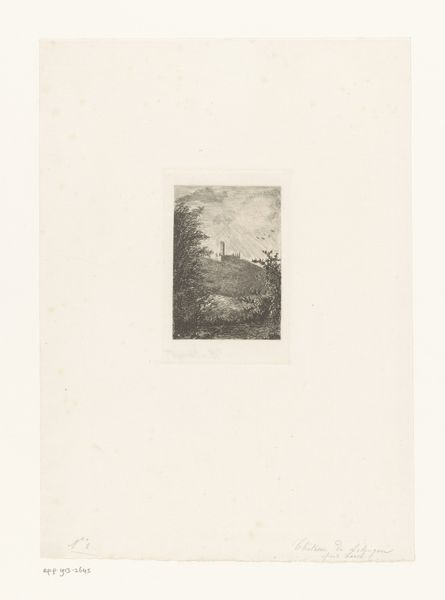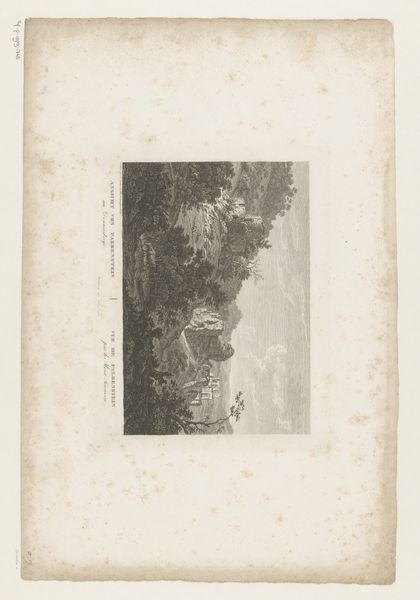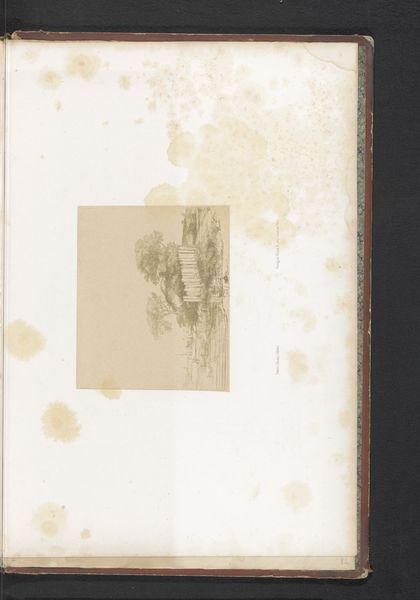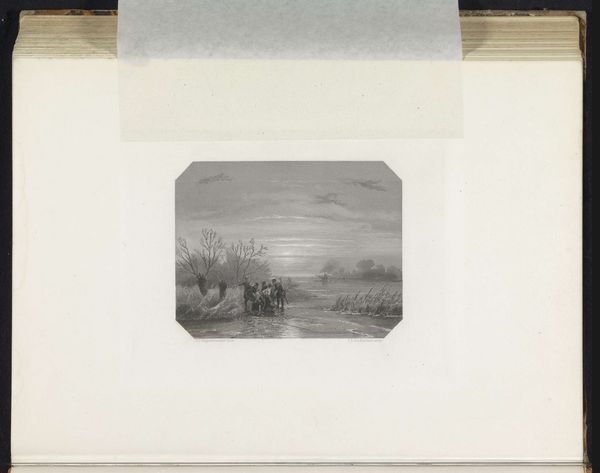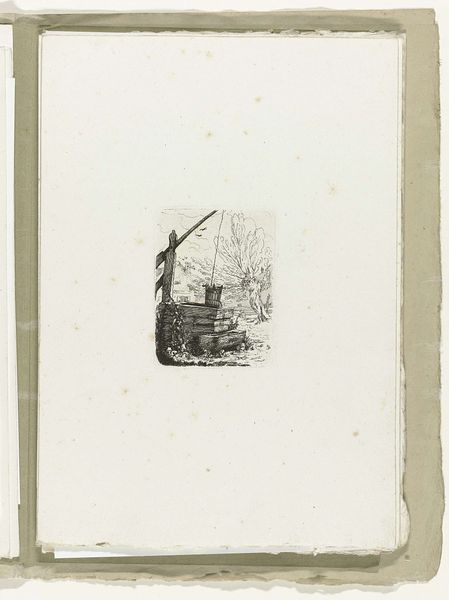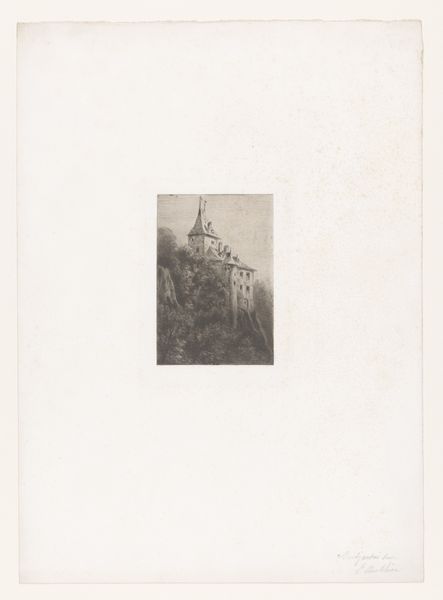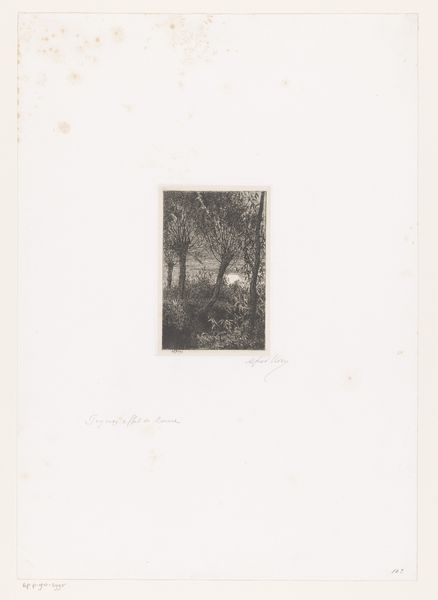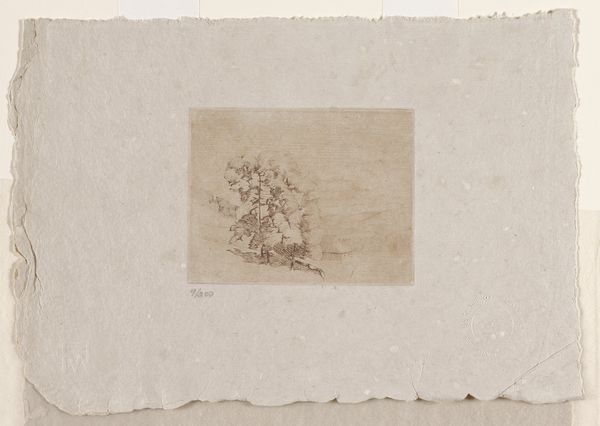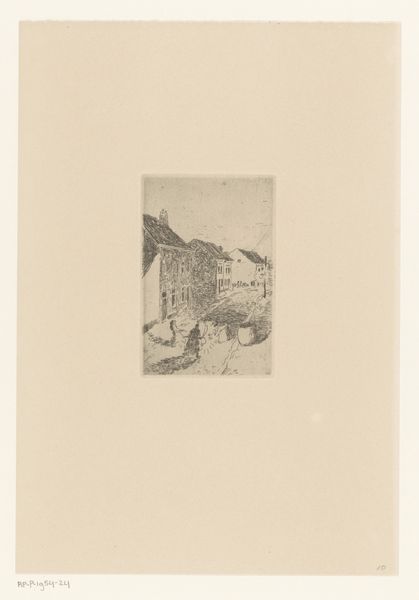
Dimensions: 102 mm (height) x 80 mm (width) (Plademål)
Curator: This delicate etching before us is called "En gammel stubmølle," or "An Old Post Mill," by Axel Hou, created in 1898. The landscape is rendered through incredibly fine lines. Editor: My immediate sense is of quiet melancholy. The soft grays and whites evoke a somber stillness, like a memory fading. The scale of the depicted image relative to the surrounding blank paper really heightens that impression. Curator: Considering the historical context, we must acknowledge the profound societal shifts happening at the time. As industrialization gained momentum, windmills like this one were rendered increasingly obsolete, becoming relics of a disappearing agrarian way of life. This artwork subtly comments on the tension between progress and tradition. Editor: That’s fascinating. For me, windmills are powerful symbols representing a bridge between nature and human ingenuity, often celebrated across various cultures. The placement of this mill within a natural setting emphasizes a deep connection between people and the land, with the wheel being at the heart of this. It really speaks to me of self-sufficiency. But as you noted, its disuse here introduces a sharp irony. Curator: Precisely. Hou masterfully utilizes etching—a labor-intensive, traditional printmaking technique—to depict a structure that, even in 1898, was becoming a quaint anachronism. This deliberate choice mirrors the artwork's thematic focus. Further, it speaks to land enclosure and loss of common rights as capitalism shifts how labor is viewed. Editor: You are right! Considering the work’s time of creation, that feels intentional. I am now reflecting on the cultural weight of mills and asking whether their obsolescence in some ways affected people’s identity? Now I view that small depiction as carrying so much history with it. Thank you for shifting my perspective. Curator: The pleasure is all mine. Hou invites us to reflect on themes that still resonate deeply: the price of progress, and our relationship with both the land and our collective history.
Comments
No comments
Be the first to comment and join the conversation on the ultimate creative platform.
